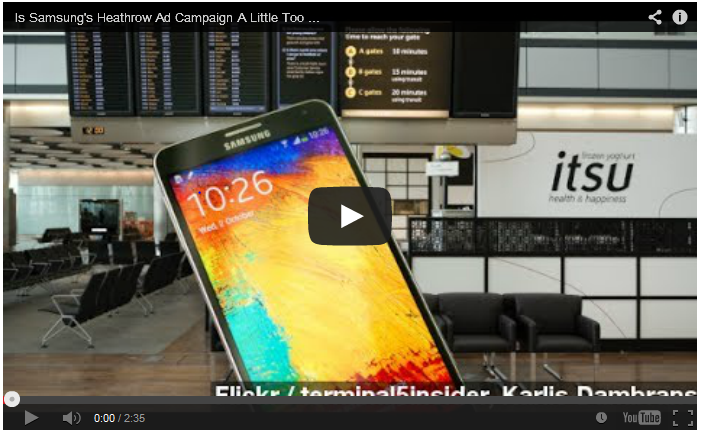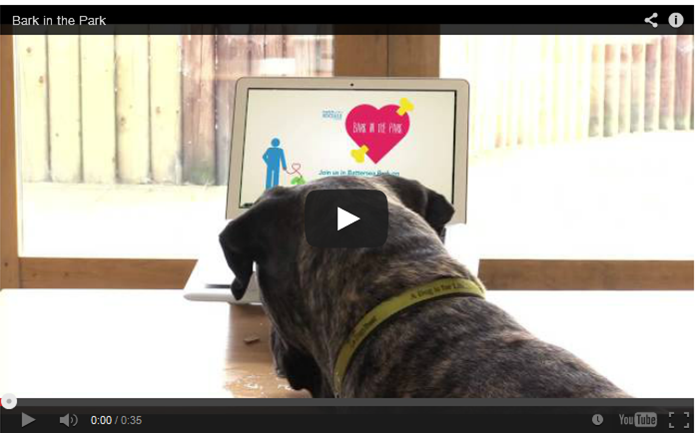Fellow Marketers
Sometimes we get so involved in advertising
we forget about marketing. It is about
more than advertising. Sometimes
marketing ideas can generate more response then the very best ads. This is the very definition of viral
marketing.
I knew I would have to share this article
as soon as I saw it earlier today in the Marketing Dive. The
6 most clever marketing stunts of 2014 (so far). Amazon seems to always find ways to catch
competitors off guard…. But the DHL
stunt is my favorite…
If there’s one thing the marketing world loves to do, it’s pull off a stunt. Some are successful, while others just come off looking kind of silly – but all offer their own lessons. We’re only midway through 2014, but the year has seen no shortage of brands tapping into their creativity to grab the attention of media and consumers alike.
Here are six of the most clever stunts we’ve seen in 2014 so far.
1. Pornhub’s G-rated search for a creative director
With the site also on the lookout for a new creative director, what better way was there to vet candidates than by launching a competition to create that very campaign? Over 1,200 safe-for-work entries were received, and the playing field has since been narrowed down to 15 finalists, whose work was posted on Pornhub’s Tumblr for followers to vote on.
Aside from vetting candidates, the contest provided Pornhub a wealth of content that it can now disperse through social media.

2. Amazon’s
big orange locker
Amazon is no stranger to a good stunt.
Remember the
drones? Not one to rest on its laurels, Amazon dropped a huge orange locker
in front of San Francisco’s iconic Ferry Building earlier this month. Initially
unmarked aside from an Amazon logo, the locker remained a mystery for a few
days while the online retailer stayed mum on its contents. Eventually, the
hashtag #giantlocker and a Nissan logo were added to the side of the container,
stoking social media conversation.Ultimately, the stunt was part of a partnership to promote the new Nissan Rogue. Those using the hashtag on social media would be entered to receive codes corresponding to different prize-filled compartments on the locker, with the ultimate prize being a Nissan Rogue.
Nothing creates viral gold like a mystery. And prizes.
3. Samsung
rebrands Heathrow Airport terminal
For two weeks this year, travelers using Terminal 5 in London’s Heathrow
Airport, were greeted with a Samsung overload. The Korean electronics company
had rebranded the area “Terminal Samsung Galaxy 5.”The new name was meant to promote the new Galaxy 5 smartphone in what is the busiest terminal in one of the world’s busiest airports. Needless to say, a whole lot of eyes saw Samsung’s signage. The brand also had reps set up in the terminal to demo the device.
The deal was the first of its kind – no other brand has ever temporarily renamed an airport terminal or taken over all signage in one wing.
4. Doritos
photobombs the Super Bowl
A 30-second Super Bowl commercial this year ran about $4 million dollars.
Looking to sidestep that hefty price tag, Doritos
crafted a stunt that helped it cash in on the hype while saving millions.The brand enlisted 30 people in one section of the crowd to wear orange, planning it so they were arranged in the shape of a Dorito. From afar, that section did bear resemblance to one of the popular nacho cheese chips.
The stunt garnered Doritos thousands of retweets and favorites on Twitter. In addition to its social media success, the stunt resulted in record from RecordSetter.com for the World’s Largest Human Dorito.
5. DHL gets rivals to deliver marketing messages
DHL pulled off a rather ruthless stunt a few months ago when it turned rival delivery drivers into its own walking advertisements.
The company had large boxes wrapped with thermo-active foil that, when chilled below a certain temperature, turns black. When delivery drivers from UPS and TNT picked up the packages, they couldn’t see the messaging on the chilled boxes. As the boxes warmed up, they displayed the message “DHL is faster.” In order to give the foil time to warm up, the addresses for delivery were intentionally difficult to find and maneuver a huge box to.
In a statement to the Consumerist, DHL denied having direct involvement with the prank, which it said was part of an internal competition by an external agency. DHL says it knew about the stunt, but didn’t know the video would be made public. Despite the questionable authenticity, it’s undeniable that the video’s quick ascent to viral status scored plenty of attention for DHL.
6. Match.com’s
dog-food-scented posters
In an effort to find more ways for singles to meet in real life, Match.com
launched a series of social events to bring people with similar interests
together. The first of those events was aimed at dog-owning singles.In order to promote the “Bark in the Park” event, Match.com created a bunch flyers and put them around London’s Battersea Park. On its face, that doesn’t seem like a clever marketing stunt, but it’s the composition of the posters that makes this promotion unique – they were all scented like dog food in order to draw in walkers’ dogs and make it impossible to avoid seeing the event’s details.
By essentially marketing to dogs, Match indirectly reached their owners in its bid to attract more singles to its match-making service.




